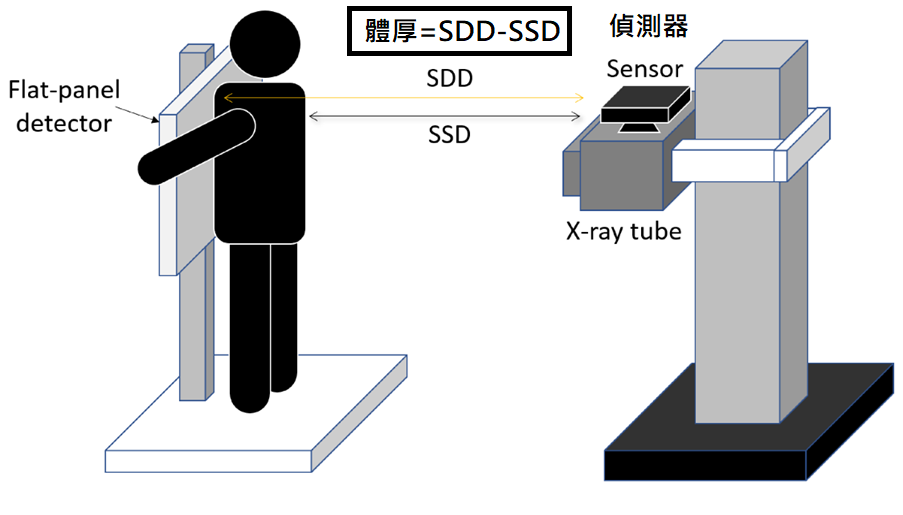Introduction
Traditional X-ray imaging requires experienced radiographers to adjust the optimal imaging parameters. These parameters allow the examinee to obtain sufficient image diagnostic quality with the least radiation dose, while avoiding excessive radiation absorption and increased risk of cancer. However, our research team has found that although current X-ray imaging systems use automatic exposure control technology, incorrect detection can occur when the examinee is in a poor position or has internal metallic objects, resulting in an approximately 20% increase in radiation dose and cancer risk for the examinee. In order to obtain the best imaging parameters, our team has developed an artificial intelligence X-ray imaging system. This X-ray imaging system is equipped with a non-contact body thickness measurement device, which accurately measures body thickness. By inputting the examinee's height and weight, the built-in intelligent X-ray imaging system can output the optimal exposure parameters, thereby obtaining stable X-ray image quality and reducing unnecessary radiation-induced cancer risk.
Features / strengths
1. Non-contact body thickness detector, which reduces direct contact between radiographers and examinees, avoiding potential contact infections during the examination process.
2. Intelligent X-ray imaging parameter prediction model, which addresses issues such as insufficient experience of radiographers, poor positioning of examinees, or the presence of metallic implants within the examinee's body.
3. It reduces the radiation dose and cancer risk for the examinee while maintaining stable and high-quality imaging.
Specification in detail
Intelligent X-ray Imaging System
X-ray imaging parameter prediction model.


